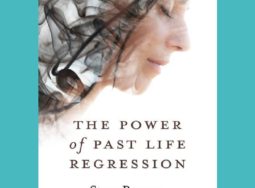If you have ever wondered what is the difference between traditional psychotherapy, coaching, hypnotherapy, and everything in between, here is a GREAT article by the highly talented Stephen Gilligan. He does his own style of work called Generative Coaching, in which he works with both the conscious mind and the subconscious mind. My work is very aligned with his philosophy and I also work with both the conscious and subconscious. He describes it so well I wanted to share his article here:
Generative Coaching:
The Practical Use of Creative Consciousness
Stephen Gilligan, Ph.D.
Encinitas, CA
www.StephenGilligan.com
Helping people to improve their lives is one of the world’s oldest professions. It has assumed many forms—philosophy, fortune telling, shamanic healing, religious rituals, informal relationships, psychotherapy, and so forth—but the underlying process of people seeking guidance for life changes has endured. The practice of generative coaching, that I have co-developed with Robert Dilts, is a third generation version of the more recent tradition of professional people helpers.1 This brief paper overviews generative coaching, first by briefly situating it in a historical context and then outlining the five basic steps of the approach.
Generative Coaching: A Third Generation Approach
Over the past century, many different methods for helping people to change have been developed. Relevant to coaching, we can distinguish three generations of such approaches. The first is traditional psychotherapy, initially developed by Freud and others. Here the focus is primarily on problems (often thought of as “mental disease”) and the past (in terms of negative events that “caused” present problems). The idea is that intellectual understanding of historical causation will free the person from the grip of their problems. It is essentially re-hashing the past to try to free up the present, with the therapist a distant expert figure who diagnoses the pathology of the client.
For many, this approach was not attractive because it (a) took too long, (b) was very expensive, (c) pathologized and stigmatized people, and (d) often produced little or no real-world changes. In response, a second generation of change approaches emphasized a person’s resources and positive goals, action over analysis, and solution-focused future orientation. These approaches developed first within psychotherapy, with diverse brief therapy methods such as the Gestalt therapy of Fritz Perls, the Transactional Analysis of Eric Berne, and the hypnotic utilization approaches of Milton Erickson.
Concomitantly, the related field of the human potential movement arose in the 1960s and 70s. It rejected authoritarian and pathologizing approaches in favor of positive changes through increased awareness, self-actualization, and altered states of consciousness. These new methods shared a client-based, positive-oriented view that stood in stark contrast to the first generation.
These second-generation approaches constellated in the 1990s’s with the emergence of what might now be called traditional coaching. Coaching was not for “sick” or “damaged” patients, but for healthy people seeking to improve their professional and personal lives. Freed of the “crazy” stigma and strict hierarchies, coaching was attractive to many people, and has found applications in a number areas, such as life development, business, health, and sports.
However, in positioning itself as a counter-point to traditional therapy, coaching declared areas like emotional work and internal consciousness to be taboo or irrelevant. We believe that such restrictions are unhelpful and unnecessary, and that the best coaching involves equal attention to the “outer game” of a person’s goals, lived experiences, and practical choices; as well as to what Tim Gallwey (2000) calls the “inner game” of a person’s state of consciousness. Such an approach assumes that all reality and identity are constructed, and that a person’s or group’s state—e.g., their beliefs, intentions, perceptions, somatic patterning, and cognitive meanings—is the base for such constructions (Gilligan, 2012). This orientation to integrating various dualities in a “both/and” approach—internal/external, problems/resources, past/future, cognitive/somatic, etc.—constitutes what we call third-generation approaches.
To understand the differences between these three generations of change work, a brief example might be helpful. John is a 40 year old man living with his mother, struggling as a telemarketer. If he came to traditional psychotherapy, he would likely be diagnosed in terms of some mental disorder that he is trapped in—e.g., depression, anxiety, character disorder—and the work would focus on either medicating him, removing the symptoms by understanding their historical causes (e.g., negative childhood experiences).or challenging his negative or non-reality based thinking. Traditional coaching would give more primary attention to his positive, future-oriented goals (e.g., starting a business) and seek to identify the resources (mentors, associates, positive associations) and actions needed to practically achieve it.
Generative coaching would ensure his goals/intentions are congruent and resonant (as will be elaborated below), then look to develop his best state of consciousness to allow the positive intention to be realized. This attunement to an optimal state might include somatic centering; identifying and transforming negative beliefs; accessing and integrating a variety of resources; ensuring action plans; identifying and transforming negative emotions and relationships relevant to the goal; and opening to a creative consciousness.
Thus, we see generative coaching as a broader and deeper type of work than traditional coaching. In emphasizing that a person is responsible for creating their own life, it invites people to learn how they can realize their dreams by mastering their own creative consciousness. While it maintains a positive orientation to the future and “infinite possibilities”, it sees all of a person’s experience—positive and negative internal states, beliefs, historical experiences, creative imaginations, somatic states, etc.—as potential resources to achieving these positive goals. To understand this process a bit more, we now turn to the five basic steps of generative coaching.
To read the rest of his article on generative coaching, click here: http://stephengilligan.com/blog/blog-7/




